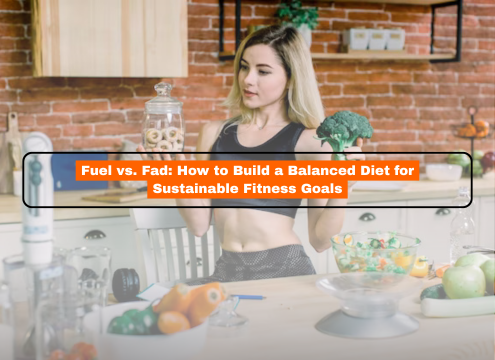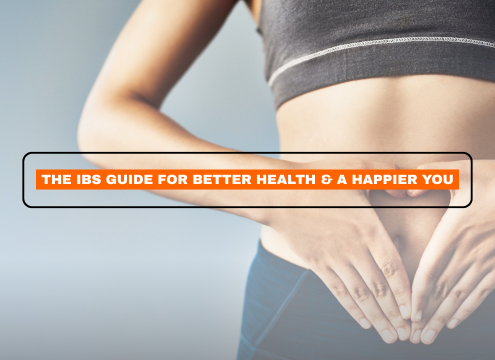In a world obsessed with quick fixes and “miracle” diets, it’s easy to get swept up in the latest trend that promises instant weight loss or sculpted abs in just 10 days. But let’s be real—how often do these fads actually work in the long run?
Fad diets might give you rapid results, but they come at a cost: nutritional deficiencies, mood swings, energy crashes, and—worst of all—rebound weight gain. Instead of chasing trends, it’s time to embrace a smarter, more sustainable approach: fueling your body with a balanced diet that supports your fitness journey for the long haul.
Let’s dive into why fueling your body beats following fads, and how you can build a balanced diet tailored to your goals.
Why Fad Diets Fail
Fad diets are typically restrictive, eliminate entire food groups, or promote unrealistic eating patterns. Some popular ones include juice cleanses, extreme low-carb or no-carb diets, cabbage soup diets, or programs that promote “detox teas.”
Here’s why they don’t work long term:
1. Nutritional Deficiencies: Most fad diets cut out essential food groups—like carbs, fats, or dairy—which can cause your body to miss out on critical vitamins and minerals. This leads to low energy, weakened immunity, poor recovery, and long-term health issues.
2. Metabolic Slowdown: Drastically reducing calories causes your body to go into survival mode. Your metabolism slows down to conserve energy, making it harder to lose fat and easier to gain it back once you stop the diet.
3. Unsustainable Habits: Living off smoothies or 800 kcal/day may seem like a shortcut—but can you see yourself doing that for years? If the answer is no, the results won’t last either.
4. Rebound Weight Gain: Most people regain the weight (and sometimes more) once they go back to normal eating. Why? Because fad diets don’t teach sustainable eating habits.
What Does “Fueling Your Body” Mean?
Unlike fad diets, fueling your body means eating to nourish, not deprive. It’s about giving your body the energy and nutrients it needs to thrive—before, during, and after workouts. It’s about eating for performance, strength, recovery, and long-term health.
When you fuel right:
- You feel more energized throughout the day.
- Your workouts improve.
- You recover faster.
- You increase your ability to burn fat and gain lean muscle.
The Foundations of a Balanced Diet
Building a balanced diet starts with understanding what your body truly needs. Here’s a breakdown of the major components of a fitness-fueling plate:
1. Complex Carbohydrates: The Energy Source
Carbs have been unfairly demonized in many fad diets. But in reality, they’re your body’s primary energy source—especially during workouts.
Choose:
- Whole grains (brown rice, oats, quinoa)
- Sweet potatoes
- Fruits (bananas, berries, apples)
- Legumes (lentils, beans)
These foods provide steady energy, support glycogen storage in muscles, and improve workout performance. Skip the sugary cereals and white bread—go for nutrient-dense, fiber-rich carbs.
2. Lean Proteins: The Building Blocks of Muscle
For metabolism, satiety, and muscle regeneration, protein is necessary. Your muscles deteriorate during exercise, and protein aids in their stronger reconstruction.
Include:
- Eggs
- Chicken breast
- Fish (salmon, tuna)
- Tofu and tempeh
- Greek yogurt or curd
- Lentils, beans, and plant protein blends
Depending on your objectives and degree of exercise, aim for 1.2–2.0g of protein per kilogram of body weight.
3. Healthy Fats: For Hormone Balance and Recovery
Fats play a critical role in hormonal health, brain function, and recovery. Don’t be afraid of them!
Good sources:
- Nuts and seeds (almonds, chia, flaxseed)
- Avocados
- Olive oil
- Fatty fish
- Ghee or coconut oil in moderation
Balanced fat intake supports fat-soluble vitamins (A, D, E, K), reduces inflammation, and keeps your metabolism humming.
4. Fiber and Micronutrients: The Unsung Heroes
Micronutrients (vitamins and minerals) don’t get the spotlight they deserve—but they’re vital for energy production, metabolism, immunity, and recovery.
Get them through:
- A variety of colorful vegetables
- Fruits (focus on seasonal and local produce)
- Whole grains
- Nuts and seeds
Fiber promotes gut health, which is important for immune system function and nutrient absorption, helps control digestion, and keeps you feeling full.
5. Hydration: The Foundation of Performance
Even a small amount of dehydration can reduce your physical performance and concentration. Proper hydration aids digestion, joint lubrication, and muscle recovery.
Tips:
- Drink at least 2.5–3 liters of water per day.
- Start your morning with a glass of water.
- Include electrolytes (especially post-exercise or during hot weather).
- For variation, infuse water with mint, cucumber, lemon, or any other fruit.
How to Make Balanced Eating a Habit
1. Follow the 80:20 Rule
Eat whole, unprocessed foods 80% of the time. Enjoy treats, sweets, or “fun foods” 20% of the time—guilt-free. This mindset keeps you sane and consistent.
2. Plan and Prep
You may prevent unhealthy takeaway and impulsive eating by meal planning a few days in advance. Store in portions, cook in batches, and keep nutritious snacks on hand.
3. Listen to Your Body
Learn the difference between true hunger and emotional cravings. Eat when you’re hungry. Stop when you’re satisfied—not stuffed.
4. Avoid Overcomplication
You don’t need fancy superfoods or expensive protein powders. Stick to simple, affordable whole foods.
Signs You’re Fueling Right (Not Fad-Dieting)
✅ You wake up feeling rested and energized
✅ Your workouts feel stronger
✅ You’re not obsessing over food all day
✅ Your mood and digestion are stable
✅ Your progress (weight loss, muscle gain, energy) is consistent and sustainable
Myth-Busting: Common Fad Diet Claims vs. Real Nutrition
| Fad Diet Claim | The Truth |
| Carbs make you fat | Excess calories do—not carbs. Whole carbs fuel workouts and metabolism. |
| Fat should be avoided | Good fats promote hormone balance and help reduce body fat. |
| Skipping meals boosts fat loss | Skipping meals can slow metabolism and lead to bingeing later. |
| Juice cleanses detox the body | Your liver and kidneys already detox your body naturally. |
| You need supplements for everything | Food first. Supplements only when truly needed. |
Fueling Your Fitness Goals: Practical Tips
For Weight Loss
- Prioritize protein and fiber at every meal.
- Reduce processed foods and sugar-sweetened beverages.
- Create a calorie deficit through balanced meals and activity, not starvation.
- Stay consistent and track progress every 2–4 weeks.
For Muscle Gain
- Eat slightly more calories than your maintenance needs.
- Include protein in every meal/snack (20–30g per meal).
- Add healthy carbs around workouts for energy and recovery.
- Strength train 3–5 times/week.
For Endurance/Performance
- Time your carbs around workouts (pre and post).
- Stay hydrated with electrolytes.
- Don’t neglect rest and recovery—nutrition is only one part of the puzzle.
Sustainability Over Perfection
Sustainability doesn’t mean eating perfectly. It means eating consistently, making small improvements over time, and creating habits you can live with for years—not just weeks.
Even the best athletes have cheat meals. Even the healthiest people enjoy desserts. What they don’t do is quit after one “off” meal.
Final Thoughts: Choose Fuel, Not Fads
When it comes to fitness, your body isn’t just a machine—it’s an ecosystem that needs balanced nourishment. Trends will come and go. But building a strong, energized, and healthy body is a result of consistent, mindful choices—not extreme diets.
So the next time you’re tempted by a flashy detox plan or a zero-carb promise, pause and ask yourself:
Am I fueling my body—or just following a fad?
Choose fuel. Choose health. Choose the long game.





